Giving someone a foot massage is a great way to show your appreciation for them and provide a calming and relaxing experience. This guide will provide a step-by-step guide on how to give a good foot massage that will leave your recipient feeling relaxed and pampered. With this guide, you will learn the techniques needed to provide a soothing and enjoyable foot massage that will be sure to leave your recipient feeling calm and rejuvenated.
Contents
Benefits of Foot Massage
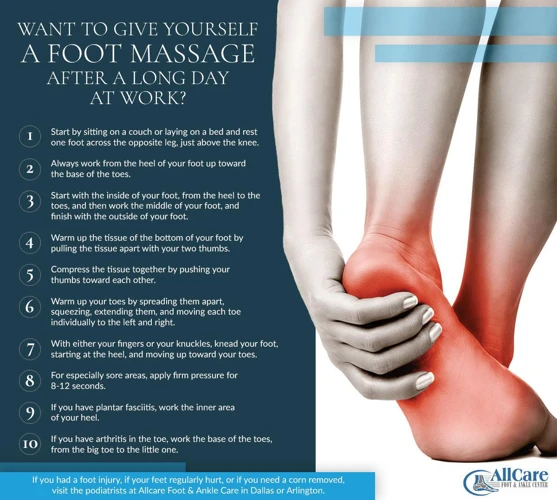
- Stress relief – Foot massage is known to reduce stress. With each massage stroke, the tension in the muscles is released and the body relaxes.
- Relaxation – A foot massage can help you relax and unwind. Studies have shown that massage can reduce heart rate, lower blood pressure and help you feel more relaxed.
- Improved circulation – Foot massage improves circulation by stimulating blood flow. This helps to bring oxygen and other nutrients to the cells, which boosts overall health.
- Pain relief – Foot massage can help to reduce pain and discomfort. This is especially helpful for people who suffer from chronic pain or conditions like plantar fasciitis.
- Better sleep – Foot massage can help to improve your sleep quality. Massaging your feet can help to reduce stress and tension, which can make it easier to fall asleep.
- Improved mobility – Foot massage can help to improve your flexibility and range of motion. This can help to make daily activities like walking and running easier.
Foot massage is an easy and relaxing way to improve your overall health. With just a few simple steps, you can learn how to massage feet at home and enjoy the many benefits it has to offer.
Preparing for a Foot Massage

Gather the Supplies
To give a good foot massage, you need to have the right supplies. Gather all the materials you’ll need before you start. This could include: a massage oil, lotion, or cream; a foot basin; a towel; and a foot scrubber.
Find a Comfortable Place
Choose a place that’s comfortable for both you and the person getting the massage. It should be a space where you won’t be disturbed, and where you can both relax. Make sure that the person getting the massage has a comfortable surface to lay on, and that it’s warm enough in the room.
Giving a Foot Massage
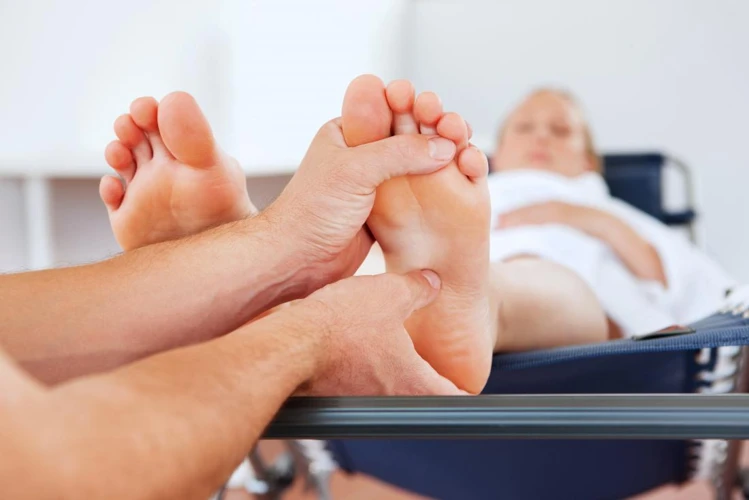
Stroking
Start with gentle strokes from the toes to the ankle, then from the ankle up to the calf muscles. This will help to relax the feet and increase circulation.
Kneading
Using the thumb and fingers, massage the arch of the foot and then the heel. Make sure to apply just the right amount of pressure for comfort.
Tapping
Using the edge of the hand, gently tap the foot with the heel of the hand. This helps to stimulate reflex points and improve circulation.
Pulling
Gently pull each toe, starting from the big toe and working down. This helps to release tension and improve flexibility.
Squeezing
Using the thumb and fingers, lightly squeeze the heel of the foot. This helps to relax the muscles in the foot and relieve stress.
Vibration
Using a vibrating massager, gently massage the arch of the foot in a circular motion. This helps to improve circulation and reduce tension. Knowing how to massage your wife’s feet properly can be a great way to show your love and appreciation.
How to Give a Good Foot Massage to a Man
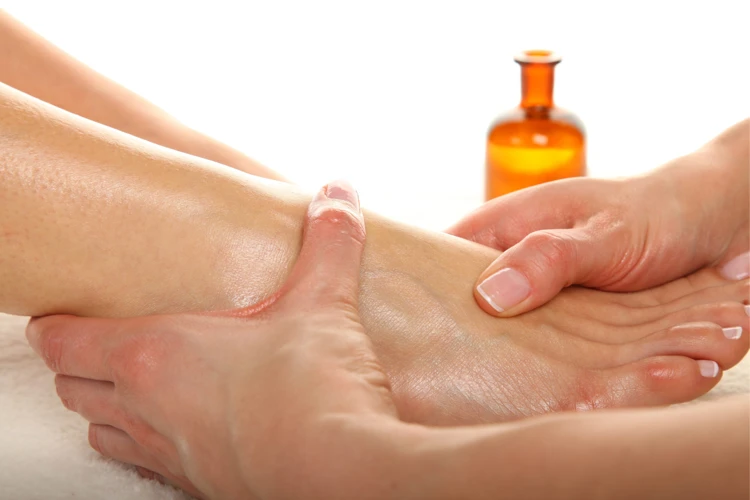
Step 1: Gather Necessary Supplies
Gather all necessary supplies for the massage, such as a foot spa, massage oil, warm towels, and lotion. You may also want to have a small bowl of warm water and a few drops of essential oil for relaxation.
Step 2: Create the Right Atmosphere
Ensure that the room is comfortable and warm and there is no distraction. Dim the lights if possible, and use relaxing music.
Step 3: Prepare the Person
Have the person sit in a comfortable chair and elevate their feet on a footrest to make them more comfortable. Use warm towels to clean the feet and lower legs.
Step 4: Apply the Oil
Apply a light amount of massage oil to the feet and lower legs. This will help you to perform the massage with ease and prevent friction.
Step 5: Start the Massage
Use your thumbs to slowly massage the feet, starting from the toes and slowly working your way up to the ankles. Use circular motions and slow, gentle strokes.
Step 6: What Are the Different Basic Foot Massage Techniques?
There are a few different basic foot massage techniques you can use to give a good foot massage. These include kneading, which involves using your fingers and thumb to apply pressure to the foot muscles. You can also use your knuckles to massage the feet in an up-and-down motion. Apply pressure to the area between the toes, as well as the heel and arch of the foot.
Step 7: Finish the Massage
Finish the massage by applying lotion to the feet and lower legs. Massage the lotion in with gentle strokes and then remove any excess with a warm towel. Give the person some time to relax before getting up.
How to Massage Your Wife’s Feet
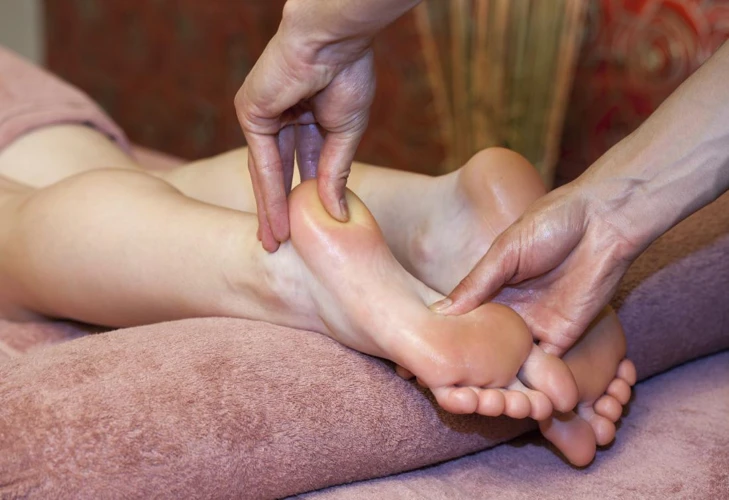
Step 1: Start with the Toes – Begin by gently squeezing each toe, then make circular motions with your thumb. Move up the foot, kneading the arch and heel with your thumbs.
Step 2: Work the Ankles – Use your thumbs to massage the ankles by moving in circular motions.
Step 3: Massage the Calves – Use your hands to massage the calves, starting at the ankle and working your way up to the knee. Make sure to use firm pressure.
Step 4: Finish with Oil or Lotion – Once you have finished the massage, use a small amount of oil or lotion to provide additional relief. This will help to keep the feet moisturized and provide extra comfort.
Step 5: Enjoy the Moment – Take the time to enjoy the moment with your wife. Talk with her, enjoy the peace, and bask in the relaxation that the massage has provided.
How to Give a Foot Massage to a Woman
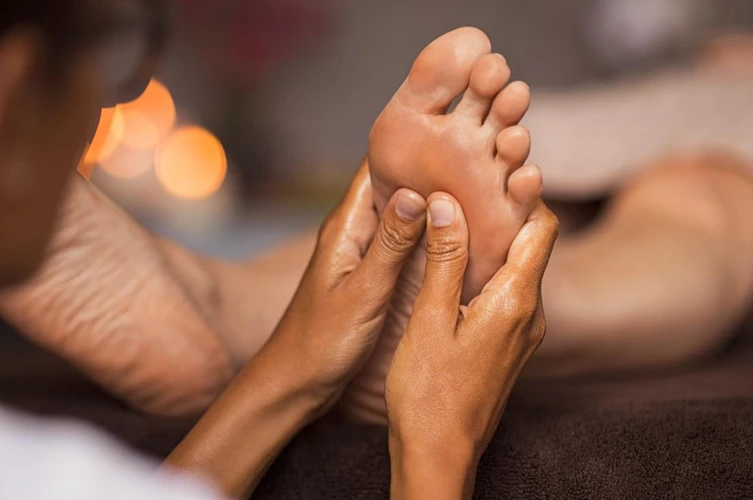
Step 1: Get everything you need. Gather the right supplies, such as massage oil, lotion, and a towel. Make sure the room is comfortable and quiet.
Step 2: Ask the woman to sit in a comfortable chair and remove her shoes and socks. Place a towel over her feet and ask her if the temperature is comfortable.
Step 3: Begin by massaging the top of the feet. Start with light strokes and gradually increase the pressure. Use your thumbs and fingers to knead the muscles and work out any knots.
Step 4: Move on to the arch of the foot. Again, use light strokes to begin and then gradually increase the pressure. Focus on the muscles in the arch and use your thumbs to apply more pressure.
Step 5: Massage the heel and ankle. Use your thumbs to apply pressure to the heel and then move up to the ankle. Gently knead and massage the muscles of the ankle to help relax them.
Step 6: Finish by massaging the toes. Use your thumbs to apply pressure to the tops and bottoms of the toes. Move slowly from toe to toe and use a circular motion.
Step 7: Finish the massage with a light foot rub. Use a light lotion or massage oil and gently rub the feet and ankles. Finish with a gentle foot massage.
Tips for Giving a Good Foot Massage
1. Prepare the Environment: Create a calming atmosphere with relaxing music and comfortable lighting. Make sure the room temperature is comfortable.
2. Use a Massage Oil: A massage oil will make it easier to glide your hands over the foot and increase circulation.
3. Begin with the Toes: Start your massage with gentle circular motions around the toes, then use your thumbs to massage each toe individually.
4. Massage the Top of the Foot: Using circular motions, massage the top of the foot using both hands.
5. Massage the Sole of the Foot: Using your thumbs and index fingers, massage the sole of the foot in a circular motion.
6. Massage the Heel and Ankles: Using your thumbs, massage the heel and ankles in a circular motion.
7. Finish with Gentle Strokes: End the massage with gentle strokes and circles.
Frequently Asked Questions
What are the Benefits of Giving a Foot Massage?
- Improves Circulation and Blood Flow: A foot massage increases circulation and blood flow throughout the body. This helps to relieve tension and can even help to reduce inflammation and pain.
- Reduces Stress and Anxiety: A foot massage helps to relax the body and mind, reducing stress and anxiety. It can also help people to feel more balanced and centered.
- Relieves Muscular Tension: A foot massage helps to reduce tension in the muscles and joints, which is beneficial for those who suffer from chronic pain or muscle tension.
- Promotes Relaxation: Foot massage can be calming and relaxing, helping to reduce stress and promote relaxation.
- Improves Overall Health: Foot massage can help to improve overall health and well-being by promoting relaxation and reducing stress.
What type of massage oil should I use for a foot massage?
Using the right massage oil is essential for giving a good foot massage. Look for a massage oil specifically designed for feet, as it will be more gentle and won’t irritate the skin. Coconut oil and almond oil are also good options, as they are light and well-absorbed by the skin. Avoid using scented oils, as these can irritate the skin.
How Often Should I Give a Foot Massage?
It depends on your needs.
- For relaxation: Consider scheduling a foot massage once a week, or when you feel like you need some extra relaxation.
- For medical reasons: If you have a medical condition that requires frequent foot massage, such as plantar fasciitis, your doctor may recommend a schedule for how often you should receive a massage.
- For athletes: Athletes may need more frequent massage to relieve soreness and reduce the risk of injury. Depending on the intensity of your workouts, you may want to receive a massage at least twice a week.
Always remember to listen to your body: If you feel like you need more massage, you may want to increase the frequency of your sessions. Ultimately, it is up to you to decide how often you should receive a foot massage.
How Long Should a Foot Massage Last?
Duration
- For a general foot massage, 10-15 minutes should be sufficient.
- For a more in-depth foot massage, 20-30 minutes is better.
Benefits
- A foot massage can help reduce stress, improve circulation, and soothe sore muscles.
- It can also help reduce inflammation, increase range of motion, and improve overall health.
Are there any techniques to avoid while giving a foot massage?
Do Not Massage the Ankles: The ankle is a sensitive joint and massaging it can cause strain and pain. Stick to the areas around the ankle, such as the arch of the foot.
Do Not Massage Too Deeply: Going too deep can cause pain in the feet, especially in areas that are sensitive. Stick to gentle, soothing strokes and light kneading.
Avoid Applying Too Much Pressure: Applying too much pressure can be uncomfortable and cause pain. Use your fingers and the palms of your hands to apply the appropriate amount of pressure.
Do Not Massage the Toes: The toes are very sensitive, so apply only gentle strokes and light kneading. Avoid pressing down too hard on the toes.
Do Not Overwork the Same Area: Moving from one area to another is important for a good foot massage. Frequently changing the area will prevent the person from feeling too much pressure in one spot.
Conclusion
Giving a good foot massage is an excellent way to relieve stress and provide relaxation. By following the steps outlined in this guide, you can ensure your recipient has a pleasant and restful experience. Massaging the feet is an easy and enjoyable way to show someone you care.

